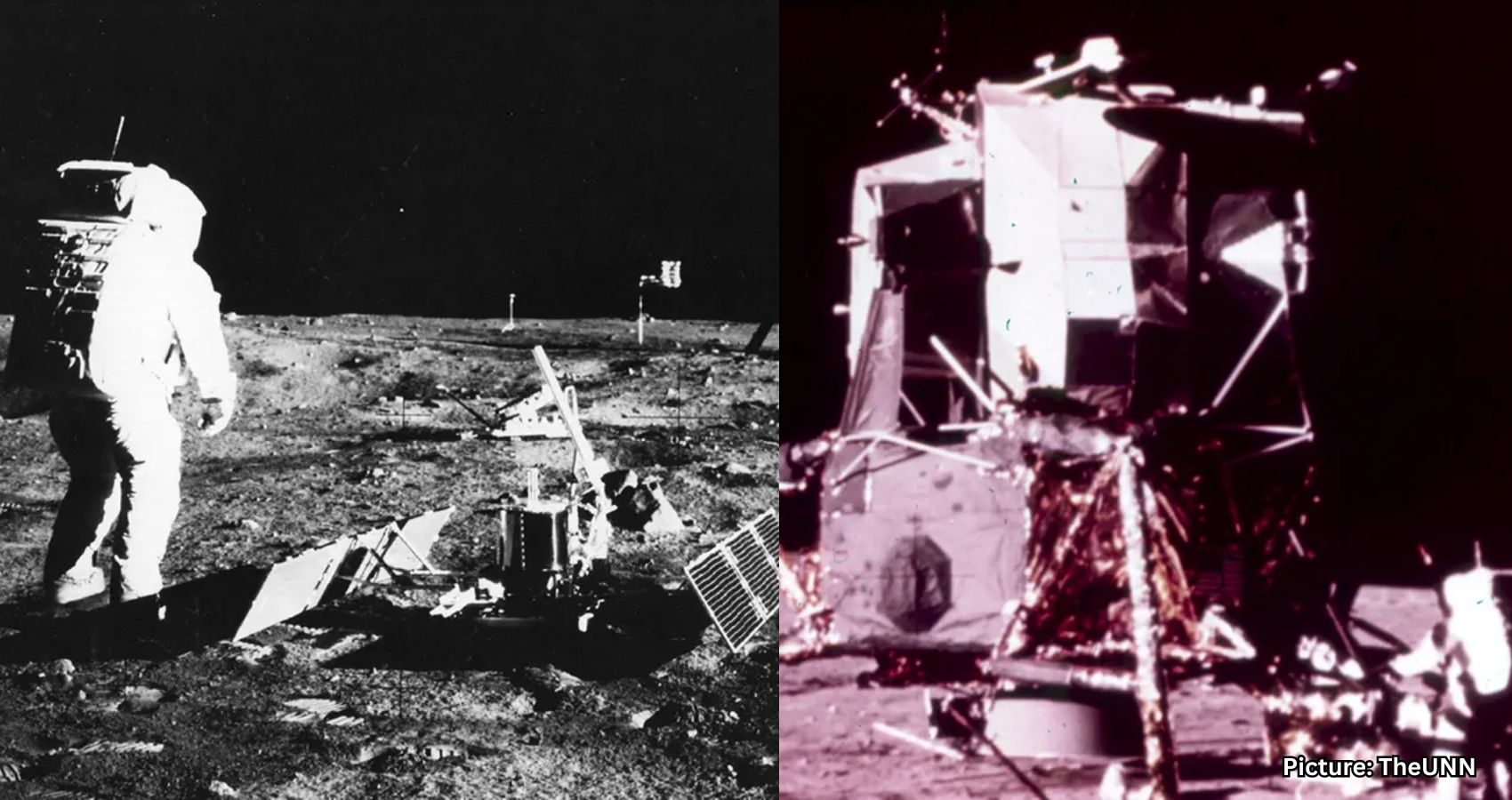Recent images from India’s Chandrayaan 2 orbiter reveal the Apollo 11 and Apollo 12 lunar landing sites, showcasing the historic vehicles more than 50 years after their missions.
Photos captured by the Indian Space Research Organization’s moon orbiter, Chandrayaan 2, have provided a stunning view of the Apollo 11 and Apollo 12 landing sites over half a century after the historic missions. The images were taken in April 2021 and were recently shared on Curiosity’s X page, a platform dedicated to space exploration updates.
Curiosity’s post featured the aerial photographs, which prominently display the Apollo landing vehicles on the lunar surface. The caption read, “Image of Apollo 11 and 12 taken by India’s Moon orbiter. Disapproving Moon landing deniers,” highlighting the enduring significance of these missions in the face of ongoing conspiracy theories regarding the moon landings.
Apollo 11, which made history on July 20, 1969, marked the moment when Neil Armstrong and Buzz Aldrin became the first humans to walk on the moon. Their fellow astronaut, Michael Collins, remained in lunar orbit aboard the command module while Armstrong and Aldrin explored the surface. The lunar module, known as Eagle, was left behind after it successfully rendezvoused with Collins the following day, eventually returning to the moon’s surface.
Less than five months later, Apollo 12 followed as NASA’s second crewed mission to the moon. On November 19, 1969, astronauts Charles “Pete” Conrad and Alan Bean became the third and fourth men to walk on the lunar surface. The Apollo program continued until December 1972, concluding with astronaut Eugene Cernan, who remains the last person to have walked on the moon.
The Chandrayaan-2 mission was launched on July 22, 2019, precisely 50 years after the Apollo 11 mission, and it took two years before capturing these remarkable images of the 1969 lunar landers. In addition to Chandrayaan-2, India also launched Chandrayaan-3 last year, which successfully landed near the moon’s south pole, marking another significant achievement in lunar exploration.
These recent photographs not only serve as a testament to the technological advancements in space exploration but also as a reminder of humanity’s monumental achievements in reaching and exploring the moon.
According to Fox News, the images from Chandrayaan 2 reinforce the legacy of the Apollo missions and their impact on space science.
Source: Original article

